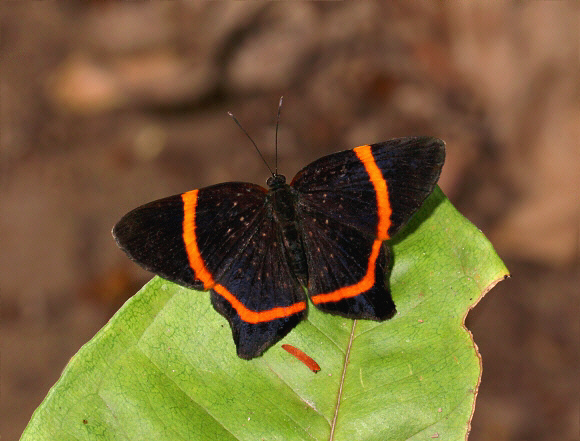 Riodina lysippus, Yarinacocha, Ucayali, Peru – Adrian Hoskins
Riodina lysippus, Yarinacocha, Ucayali, Peru – Adrian Hoskins
Introduction
There are 3 species in the genus Riodina, all of which are confined to the neotropical region. They are all characterised by the presence of orange bands on the fore and hindwings, but only lysippus has the whitish spots in the basal area. The other 2 species are lysippoides which is similar in shape but has narrower orange bands; and lycisca which lacks the stubby black tails on the hindwings.
Riodina lysippus is a widely distributed species, being found from Venezuela to Bolivia. The other species have a more southerly distribution – lysippoides is found in southern Bolivia, Paraguay, northern Argentina and Uruguay; and lycisca is found in southern Brazil, Argentina and Paraguay.
Habitats
This is a lowland rainforest species which is usually found in the vicinity of rivers, streams or lagoons at altitudes between about 100-800m.
Lifecycle
To be completed.
Adult behaviour
Groups of between 4 – 20 males can often be found aggregating on damp or wet ground at the edges of lagoons, rivers and streams. They tend to arrive at these feeding spots in late morning, and remain until dusk, when they gradually disperse. When feeding they usually sit with wings held half open, and tend to walk or skip about on the ground, while constantly probing with their proboscises.
Females are seen less often but in similar situations. Unlike the males they do not imbibe moisture from the ground, but instead settle on the nearby foliage of small plants or bushes.
